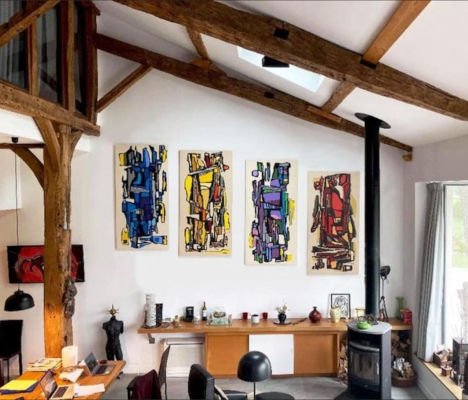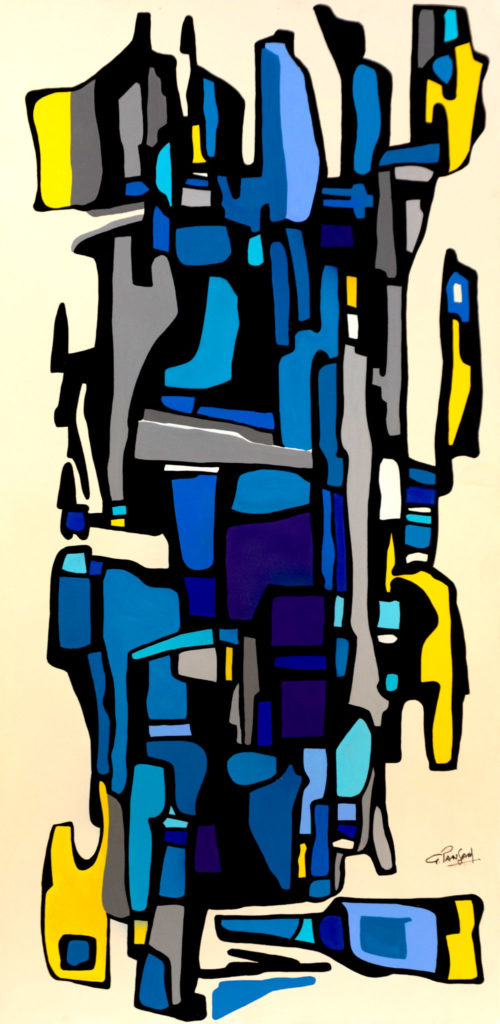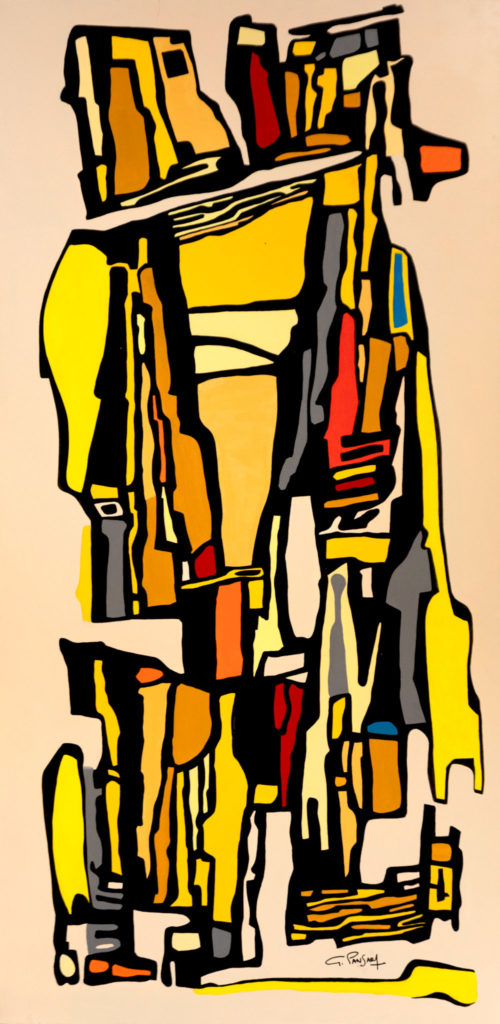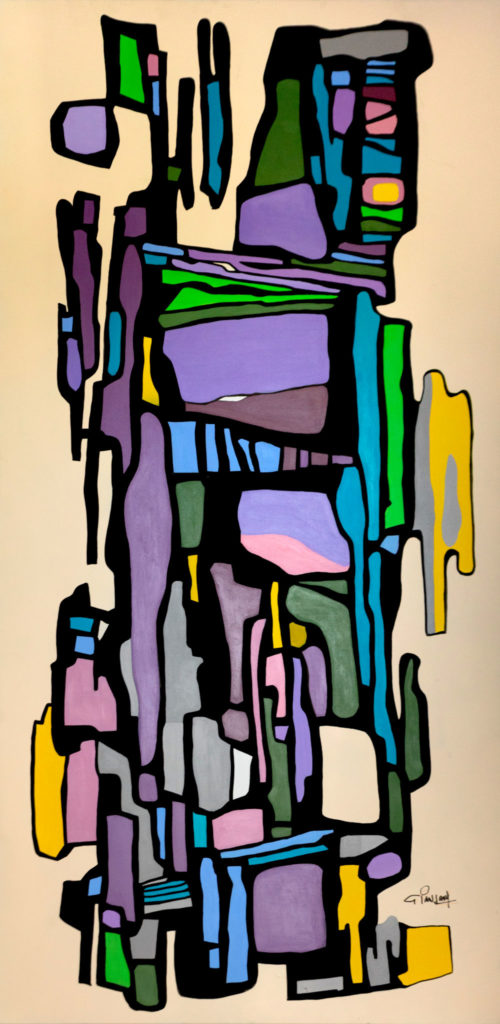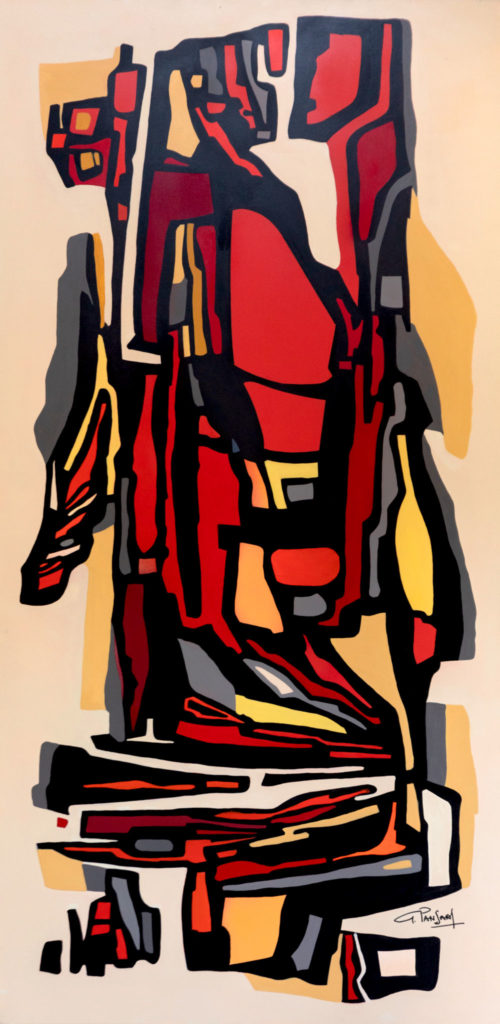Certaines oeuvres ont été créées sous différentes déclinaisons : en diptyque, en triptyque voire en quadriptyque. La plupart du temps ce style d’oeuvre s’expose en rassemblant les différentes parties. Elles peuvent aussi si l’oeuvre s’y prête, être présentées les unes indépendamment des autres, c’est un choix personnel.
Le Diptyque
Le diptyque c’est une oeuvre en deux parties. L’exemple choisi ci-dessous propose une femme et un homme. Ces tableaux peuvent être exposés séparément ou côte à côte. Guy Pansart joue avec un style et des couleurs similaires incarnant son identité de diptyque.


Le Triptyque
Le triptyque c’est une oeuvre en trois parties. Deux exemples sont proposés dans ce focus : le premier a été imaginé avec des panneaux de dimensions différentes. Ce triptyque sur fond blanc offre un panneau central plus large que les deux panneaux latéraux. Chaque partie peut être exposée indépendamment. Par contre si elles sont exposées ensemble le panneau central plus large doit rester au centre pour relier les éléments entre eux.
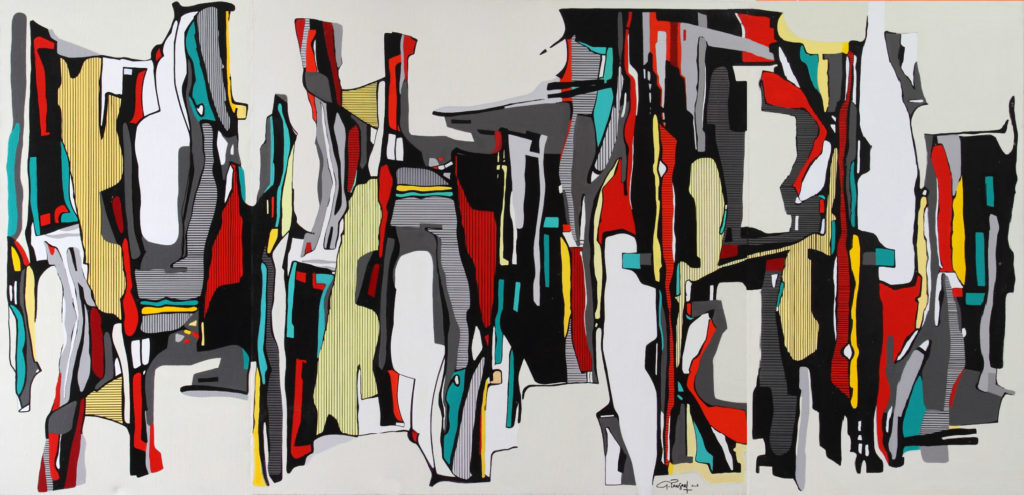
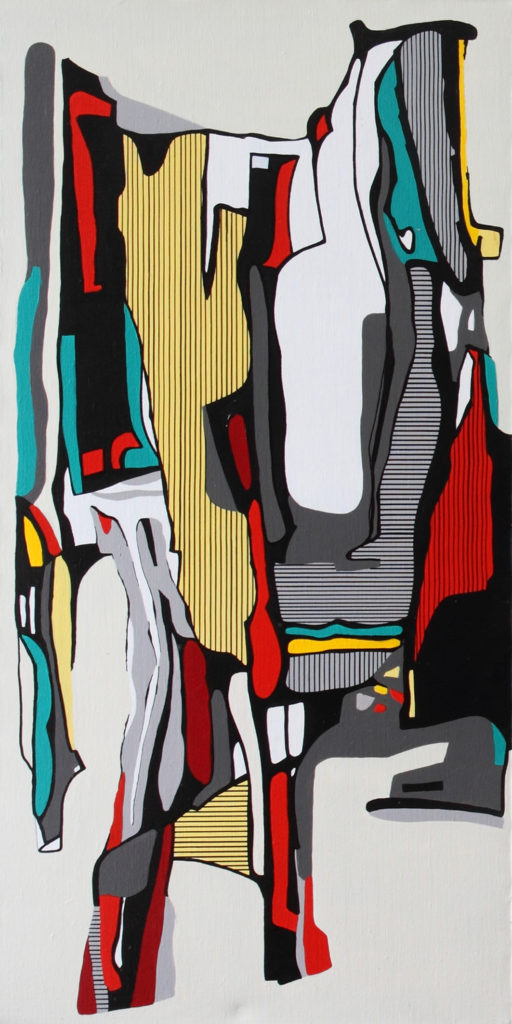

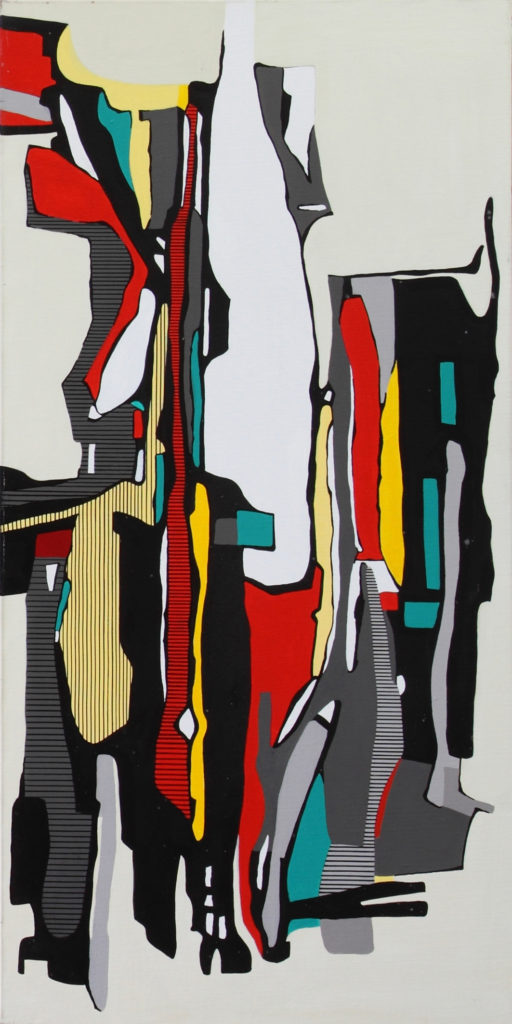
Guy Pansart s’est amusé à imaginer un triptyque « en décalé ». Les trois panneaux se relient entre eux par un élément précis qui oblige à décaler le cadrage habituel.
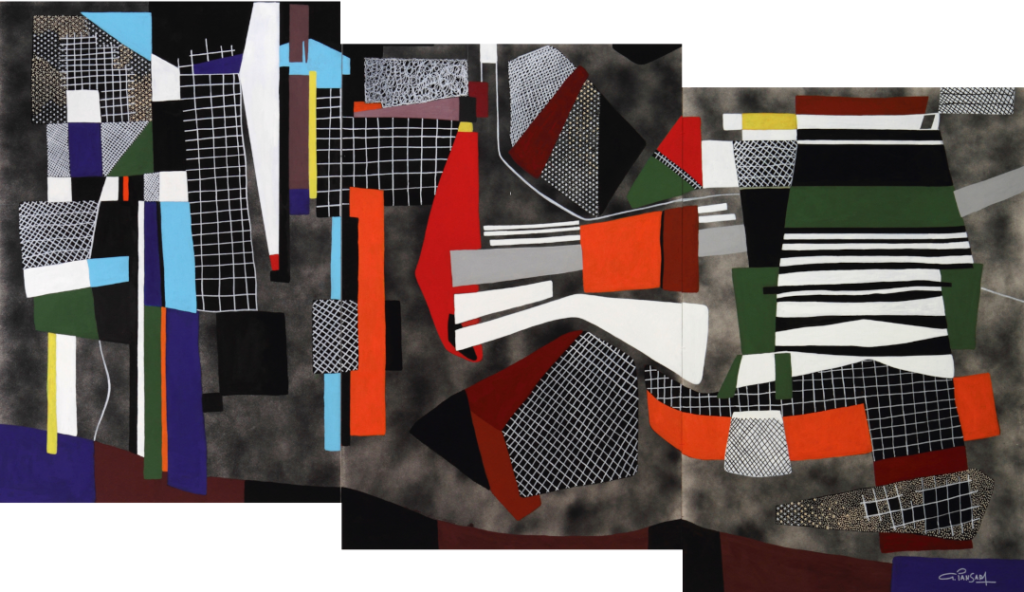
Plaçons les oeuvres côte à côte en les espaçant. On voit bien grâce aux pointillés qui les relie les éléments qui permettent de placer les trois panneaux en décalé.
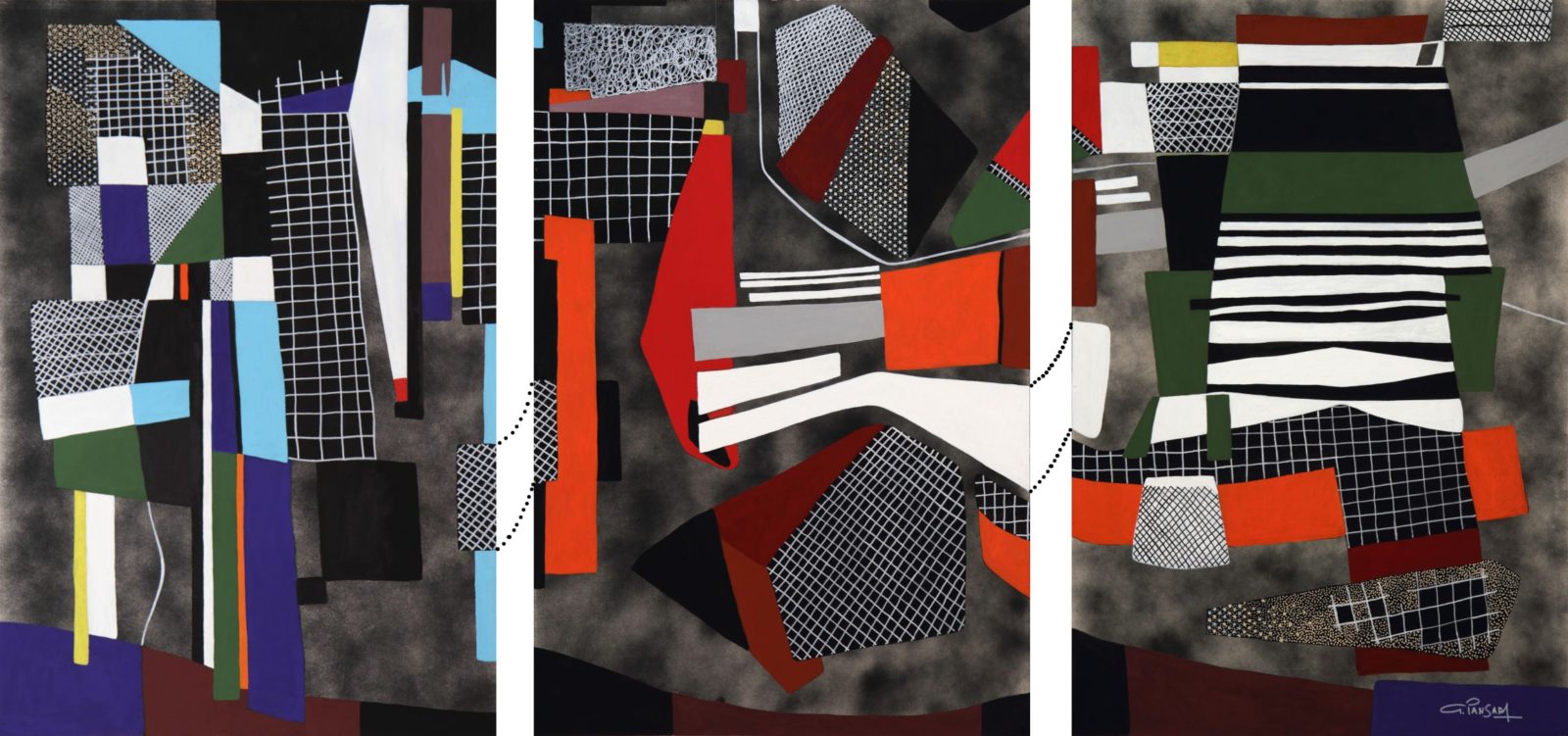
Le Quadriptyque
Le quadriptyque c’est une oeuvre en quatre parties. Cette oeuvre a été composée avec l’idée de placer les panneaux un peu espacés les uns des autres. L’Artiste les a exposé chez lui. Le choix de l’ordre des couleurs peut être différent.
